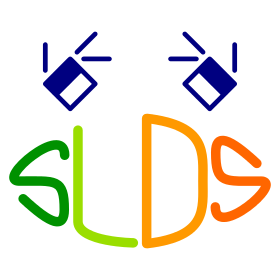Introduction
 The study of LIS structures focuses on Highly Iconic Structures (HIS), marked by specific manual and non-manual articulators, most notably gaze patterns, where linguistic information is arranged in space and time in a simultaneous, multi-linear fashion that has no parallel in verbal language. The aim is to analyze formal features that appear to be influenced by the visual-gestural modality, hence differentiate such aspects from functionally comparable forms in verbal languages.
The study of LIS structures focuses on Highly Iconic Structures (HIS), marked by specific manual and non-manual articulators, most notably gaze patterns, where linguistic information is arranged in space and time in a simultaneous, multi-linear fashion that has no parallel in verbal language. The aim is to analyze formal features that appear to be influenced by the visual-gestural modality, hence differentiate such aspects from functionally comparable forms in verbal languages.
These specific linguistic and semiotic features are explored and analyzed within different typologies of communication (e.g. signed conversations, narrative texts, poetry and signed discourses) to highlight the distinctive properties of face-to-face human language.
The study of the acquisition of LIS focuses on the transition from gestures to signs, the emergence of lexicon and the first development of grammar. A comparison of sign language and spoken language vocabulary acquisition, both in terms of developmental milestones and in terms of timing, is under way through dedicated questionnaires (Italian Sign language version of the McArthur Bates CDI) and a Picture Vocabulary Task (Pictures IN Game = PING).
An appropriate written representations of LIS is crucial to conduct all the studies mentioned above. A writing system devised for sign language (“SignWriting”, Sutton, 1995) is being adapted to LIS, and is currently used by deaf signers and researchers for the purpose of transcribing LIS as well as composing written LIS texts. Results have led to significant advancement in the linguistic analysis of sign language structure and in developing the underlying theoretical framework, and have also lead to relevant improvements in deaf signers’ meta-linguistic abilities.
National and International projects carried on by this research unit are:
- DEAL TOI

